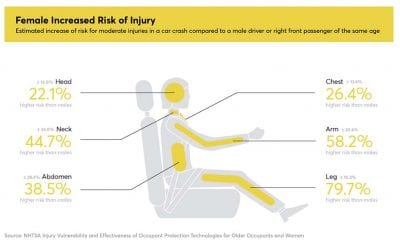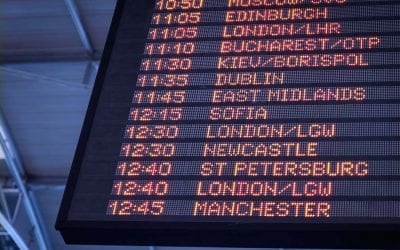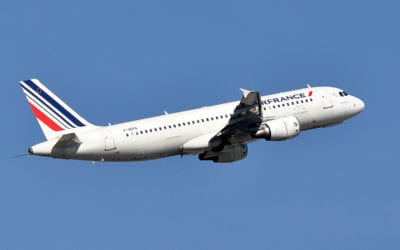The stakeholders portion of the House Aviation Subcommittee of the Transportation and Infrastructure Committee began today just like scores of these hearings have begun for the recent years. The lineup of the usual suspects was there — Air Transport Association, Aircraft Owners and Pilots Association, Aerospace Industries Association, American Association of Airport Executives and the air traffic controllers’ union were all lined up ready for their grilling. (Consumers were, of course, missing. Who would consider them a stakeholder?)
Then funding entered the picture.
The outline of the morning session started out as a rerun of the FAA Reauthorization hearings of the past. Basically, every stakeholder agreed that the U.S. needs a new air traffic control system (ATC). Everyone agrees that the country needs it badly.
The airlines need it to save money. Aircraft owners need it, but not such a high-tech system as that needed by the commercial pilots. The Aerospace Industries need it so that it can stay in the forefront of airspace technology and sell more products internationally and domestically. The air traffic controllers need it so that they can become more productive. And everyone tells us that consumers need this because it will be safer and save them time sitting on the runway and circling airports.
The normal litany of we-don’t-have-enough-funding statements were dutifully intoned. Everyone spoke about how they have been saving the taxpayers lots of money; but with more money today, they can save taxpayers even more in the future. I always love this special kind of Washington, DC, logic. It reminds me of a friend of mine who went broke buying great bargains. He saved so much money on bargains that he found himself in bankruptcy.
Finally, when the questioning started, the representatives on both sides of the aisle started to zero in on where money needed to be cut if the FAA funding was to be decreased to levels of 2008. Everyone agreed that they could not expect the FAA to operate with $1.3 billion dollars less than they have today, however everyone is looking at a funding decrease as a very possible reality.
Democrats want to hear all of the pain that cutting the budget will produce. Construction that will be cut. Jobs lost. Safety programs stopped. Passengers threatened by poor certification procedures. Lost future air traffic savings.
These are the reasons that funding needs to stay the same or increase.
The Republican members asked how each one of the witnesses might find a way to help the FAA save money. Future FAA savings don’t only come from the government side; there is a significant contribution from the private sector as well. It was mentioned that even with a cutback in FAA funding, the passenger facility charges (PFC) might actually provide a non-governmental increase in funding — With more passengers flying, the PFCs will be increasing. Another suggested approach was for the FAA to finally roll out the long-awaited study that quantifies the savings that airlines will realize in fuel and time efficiencies once the new ATC system is in place. That way airlines might pony up money for avionics that will produce savings for them.
One issue brought up by both Democrats and Republicans was the the unreasonably long processes for environmental reviews. These requirements are slowing down everything from new aircraft landing patterns to new runway construction. Finding a way to provide an environmental fast track for the new air-traffic patterns and new facilities would be one of the biggest areas of cost savings. This is easy to say (it is repeated annually) and hard to change.
It was, overall, a relatively cathartic hearing. Members actually said, “We’ve run out of money.”
There were lots of examples of possible pain and in the end the roomful of witnesses and members alike all realized that they would have to figure out where the budget could be cut so that safety would not be impaired and the future would not be squandered. In the words of the Subcommittee Chairman Petri, they were searching for “a soft landing.”
After 17 attempts at passing this FAA bill, the committees in the Senate and the House seem to have a sense of urgency. Political diddling has run its course. The air traffic system is now facing a crisis and the U.S. is slipping behind in the aviation field where it always dominated for decades.
Hopefully, the new reality of limited funds will encourage both the FAA and this band of stakeholders to look at figuring where they can save a billion or so today so that they might have $8 billion to spend later in the decade. It can be done. It can be done responsibly. The FAA just needs to be unleashed, find a way to team up with aviation industry and be allowed to focus on getting the job done.
Easy to say. So far, impossible to get done.
Do you think that the House and Senate will pass the FAA reauthorization bill this session to allow the modernization of our air traffic control system?

Charlie Leocha is the President of Travelers United. He has been working in Washington, DC, for the past 14 years with Congress, the Department of Transportation, and industry stakeholders on travel issues. He was the first consumer representative to the Advisory Committee for Aviation Consumer Protections appointed by the Secretary of Transportation from 2012 through 2018.




